An incredible Mayan warrior statue with a serpent helmet emerges in Chichén Itzá, Yucatán

The anthropomorphic sculpture of the Mayan warrior.
The recent archaeological discovery at Chichén Itzá, where a Mayan statue representing a warrior with a serpentine helmet was unearthed, sheds new light on Mayan culture and beliefs. This find, from excavations linked to the Mayan train project, underlines the importance of the balance between modern development and preservation of heritage. It reaffirms the link between current Mayan communities and their rich historical past.
The history of the Maya, one of the most fascinating civilizations of pre-Columbian America, continues to be revealed through archaeological discoveries. Recently, excavations at Chichén Itzá, on the Yucatán Peninsula, an emblematic site of this culture, revealed a statue of a Mayan warrior, approximately 1000 years old, wearing a serpent-shaped helmet, in the basement of a temple. This discovery, relayed by a press release from the National Institute of Anthropology and History (INAH) of Mexico, beyond its historical value, offers a valuable insight into Mayan beliefs and art. It also raises important questions about heritage conservation in the face of contemporary development challenges, while strengthening the connection between current Mayan communities and their ancestral heritage.
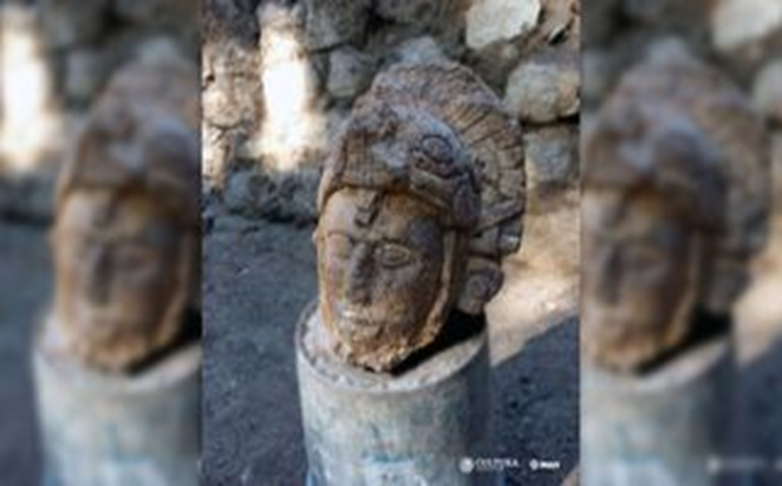
A thousand-year-old statue revealed
The recent archaeological discovery in Mexico took place during study work for a new railway line. The discovered statue represents a Mayan warrior, an important figure in this ancient society. She is known for her skill in combat and her role in rituals and ceremonies. What makes this statue particularly fascinating is its helmet, sculpted in the shape of a feathered serpent with its mouth open.
This representation is significant, evoking elements of Mayan mythology, where the feathered serpent plays a central role. The statue measures 33 cm in height and 28 cm in width. These dimensions suggest that it could have been an element of a larger sculptural composition. Perhaps part of a decorative ensemble or a more imposing monument.
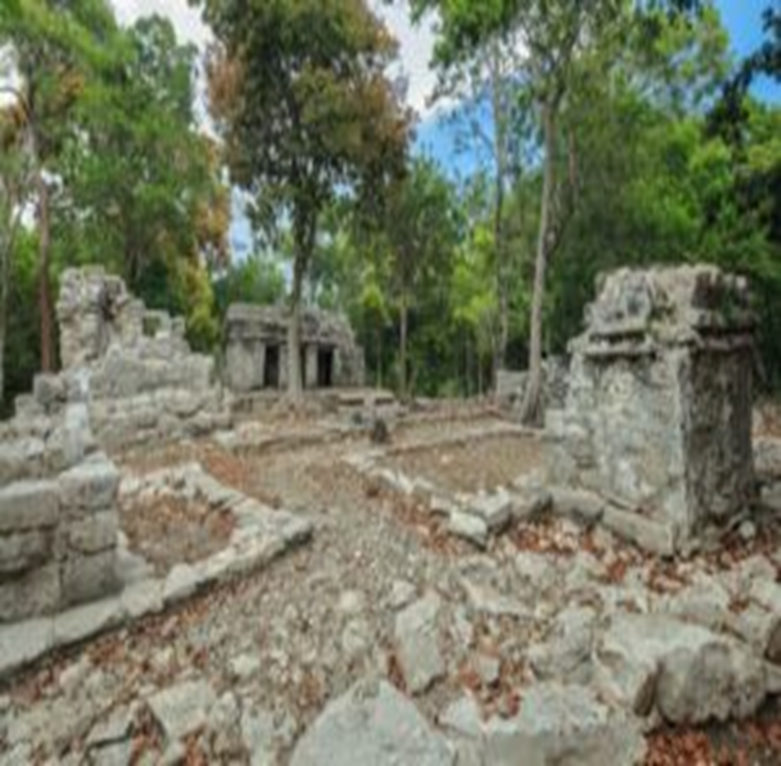
The area of Casa Colorada where the sculpture was found during excavation work.
Despite the passage of time, the statue is remarkably well preserved. It has a crack, but this does not detract from the fine details and the quality of the sculpture. The exceptional conservation will allow the study of sculpting techniques and artistic motifs used by the Maya. This provides a valuable window into their art, culture and belief system.
A Mayan statue linked to Kukulcán
Researchers believe this statue may have a tangible connection to Kukulcán. Often depicted as a feathered serpent, it is a major deity in Mayan mythology. This figure is closely associated with creation, fertility, and natural elements such as wind. Kukulcán is often compared to Quetzalcóatl, a similar deity in Aztec culture. In Mayan cosmogony, Kukulcán is seen as a mediator between heaven and earth. He is a kind of bridge between gods and men. This deity is also associated with wisdom, learning and the arts.
More specifically, the feathered serpent represents the duality of human and divine nature. The snake, crawling on earth, symbolizes the material world. The feathers, evoking the flight of birds, represent the spiritual world. This duality is fundamental to the Mayan understanding of the universe, where the material and the spiritual constantly coexist and interact.
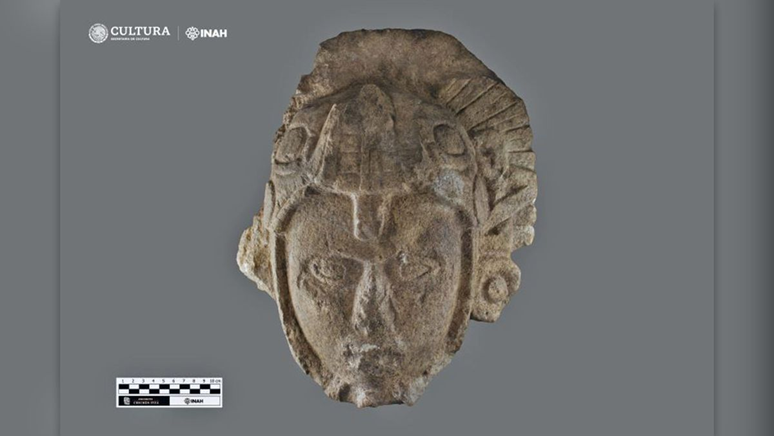
A statue which establishes the importance of Kukulcán and the relations of the Mayans with other civilizations
This discovery coincides with that of a circular temple also dedicated to Kukulcán at the site of El Tigre in Campeche. This coincidence is not trivial. It testifies to the importance and prevalence of Kukulcán in Mayan culture. It reflects the importance of religion in the daily life of this civilization.
The temple was uncovered during work accompanying the Mayan train project. Diego Prieto Hernández, director of the National Institute of Archeology and History (INAH), explains : “ This building expands our knowledge of the late occupation of El Tigre .”
The circular structures generally correspond to the Early Postclassic period, between 1000 and 1200 CE. This is a time when the Mayan area maintained links with other regions of Mesoamerica. This was particularly the case with central Mexico, Oaxaca and the Gulf Coast. These links allowed the diffusion of religious iconography between the two cultures. The Aztec feathered serpent deity, Quetzalcóatl, was probably adopted by the Maya as Kukulcán.
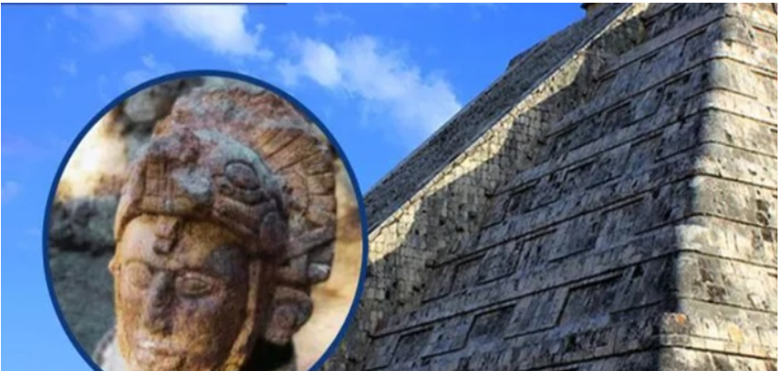
The newly discovered structure is a two-story circular building, once crowned by a temple with a flat roof. It is similar to several others in the Yucatán Peninsula, such as Edzná, Becán, Uxmal and Chichen Itzá.
Cultural and historical impact of the Mayan statue
Chichén Itzá is an archaeological site of capital importance for the understanding of Mayan civilization. This complex, flourishing between the 9th and 13th centuries, is a crossroads of Mayan history and culture. It is home to iconic structures such as the pyramid of El Castillo, temples, ball courts. It holds an astronomical observatory, testifying to the advancement and sophistication of the Mayans.

The statue found in Temple 6 of Maudslay sheds light on the first periods of habitation of Chichén Itzá. It offers clues to how the Maya viewed the world and their place in it. This discovery will help researchers chart a more precise timeline of the evolution of Chichén Itzá as a major cultural and political center of the Mayan civilization.
In fact, the statue is a bridge between the past and the present. This connection is essential for the preservation of cultural identity. It allows a better understanding of Mayan history by current and future generations. It is also the principle of the Mayan train project which was the setting for this discovery.
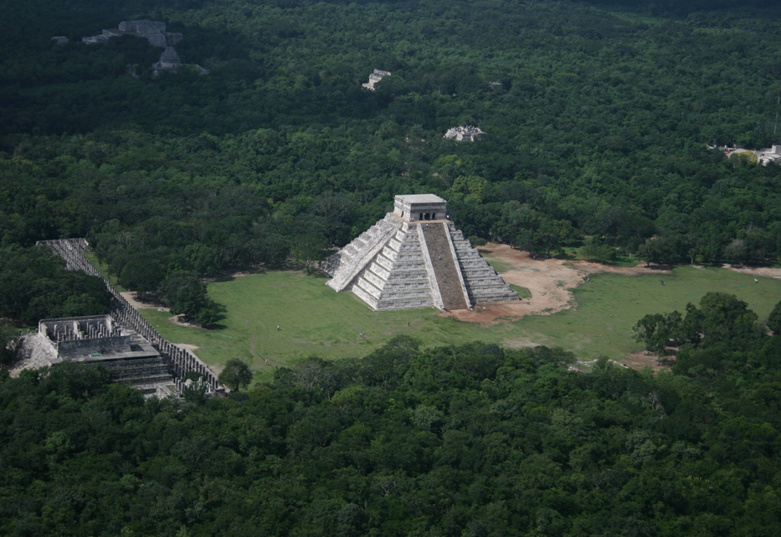
Prieto Hernández praised the Archaeological Zone Improvement Program (Promeza) accompanying the development of the Mayan train. It will allow Mexico to “recover the glorious past and cultural present of the great Mesoamerican Mayan nation.” Archaeologists have now completed 87% of the excavations at El Tigre. These discoveries contribute to enriching the overall understanding of this ancient civilization.
Source : websites

